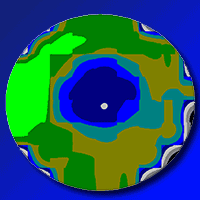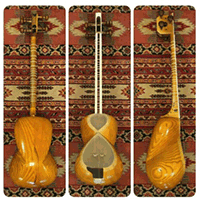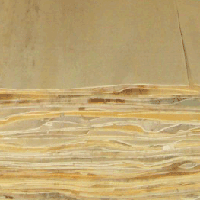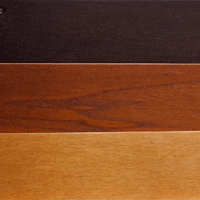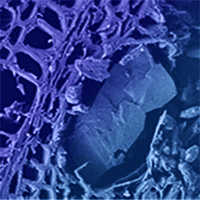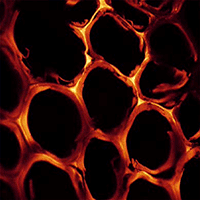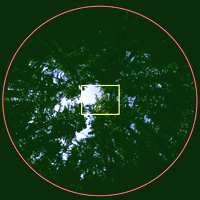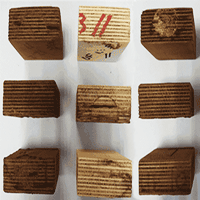
Thermo-modified native black poplar (Populus nigra L.) wood as an insulation material
Luigi Todaro (1), Stefania Liuzzi (2), Antonio Marco Pantaleo (3), Valentina Lo Giudice (1) , Nicola Moretti (1), Pietro Stefanizzi (2)
iForest - Biogeosciences and Forestry, Volume 14, Issue 3, Pages 268-273 (2021)
doi: https://doi.org/10.3832/ifor3710-014
Published: May 29, 2021 - Copyright © 2021 SISEF
Research Articles
Collection/Special Issue: Research Project PRIN-MIUR 2015
The forest-wood value chain: biomass supply, traceability, C-footprint. Innovation for bioarchitecture and energy efficiency
Guest Editors: Scarascia Mugnozza G, Maesano M, Romagnoli M
Abstract
Extensive research projects have been carried out on thermal modification of wood material, yet thermal properties of thermally modified poplar wood have not been comprehensively investigated. Black poplar (Populus nigra L.) is a Eurasian species native to Italy which is rarely used for the production of high-performance products, though it is one of the least expensive hardwoods on the market. To explore alternative applications of poplar wood such as building facade or fire resistance materials, reliable data of thermal behaviour of thermally modified wood at high temperatures are needed. In this work, the thermal behaviour of native black poplar wood after thermal modification at different temperatures (180 °C, 200 °C and 220 °C) was analyzed. Thermal conductivity, thermal diffusivity and porosity were measured on poplar wood boards, as well as mass loss and wood color changes after heat treatment were quantified. Thermal conductivity of wood samples showed significant changes after treatment at 200 and 220 °C, but not at 180 °C. Wood porosity showed significant differences with the control when the samples were modified at a temperature of 220 °C. Increasing color differences were observed in wood samples by increasing the thermal modification temperature. Also, the mass loss of wood samples increased and equilibrium moisture content significantly dropped down after thermal modification. Our results showed that the use of thermally-modified black poplar wood could be considered as a viable alternative to chemically treated wood products for specific applications where high insulation is needed, such as saunas or windows, and for façades elements.
Keywords
Thermal Modification, Poplar, Insulation, Thermal Properties
Authors’ Info
Authors’ address
Valentina Lo Giudice
Nicola Moretti 0000-0001-6897-8310
School of Agricultural, Forest, Food and Environmental Science (SAFE) -University of Basilicata, Potenza (Italy)
Pietro Stefanizzi 0000-0001-7506-5202
Department of Civil Engineering Sciences and Architecture - Polytechnic University of Bari, Bari (Italy)
Department of Agro-Environmental Sciences - University of Bari (Italy)
Corresponding author
Paper Info
Citation
Todaro L, Liuzzi S, Pantaleo AM, Lo Giudice V, Moretti N, Stefanizzi P (2021). Thermo-modified native black poplar (Populus nigra L.) wood as an insulation material. iForest 14: 268-273. - doi: 10.3832/ifor3710-014
Academic Editor
Giacomo Goli
Paper history
Received: Nov 30, 2020
Accepted: Apr 08, 2021
First online: May 29, 2021
Publication Date: Jun 30, 2021
Publication Time: 1.70 months
Copyright Information
© SISEF - The Italian Society of Silviculture and Forest Ecology 2021
Open Access
This article is distributed under the terms of the Creative Commons Attribution-Non Commercial 4.0 International (https://creativecommons.org/licenses/by-nc/4.0/), which permits unrestricted use, distribution, and reproduction in any medium, provided you give appropriate credit to the original author(s) and the source, provide a link to the Creative Commons license, and indicate if changes were made.
Web Metrics
Breakdown by View Type
Article Usage
Total Article Views: 35000
(from publication date up to now)
Breakdown by View Type
HTML Page Views: 29637
Abstract Page Views: 2493
PDF Downloads: 2254
Citation/Reference Downloads: 3
XML Downloads: 613
Web Metrics
Days since publication: 1657
Overall contacts: 35000
Avg. contacts per week: 147.86
Citation Metrics
Article Citations
Article citations are based on data periodically collected from the Clarivate Web of Science web site
(last update: Mar 2025)
Total number of cites (since 2021): 10
Average cites per year: 2.00
Publication Metrics
by Dimensions ©
Articles citing this article
List of the papers citing this article based on CrossRef Cited-by.
References
Conservation of black poplar (Populus nigra L.). Information Note 57, Forestry Commission, Edinburgh, UK.
Gscholar
Interaction of technical and technological factors on qualitative and energy/ecological/economic indicators in the production and processing of thermally modified merbau wood. Journal of Cleaner Production 252: 119793.
CrossRef | Gscholar
Wood modification by heat treatment: a review. BioResources 4 (1): 370-404.
Gscholar
Wood modification: chemical, thermal and other processes. John Wiley and Sons, Chichester, UK, vol. 5, pp. 260.
Gscholar
The transverse thermal conductivity coefficients of wild cherry wood heat-treated using the ThermoWood method. In: Proceedings of the “10th International Conference on Wood Science and Engineering in the 3rd Millennium” (Campean M ed). Brasov (Romania) 5-7 Nov 2015. PRO Ligno, Brasov, Romania, pp. 679-683.
Gscholar
RAF Italia 2017-2018. Rapporto sullo stato delle foreste e del settore forestale in Italia [Report on the state of forests and on the forest sector in Italy]. Compagnia delle Foreste, Arezzo, Italy, pp. 284. [in Italian]
Gscholar
Thermal conductivity of solid wood panels made from heat-treated spruce and lime wood strips. In: Proceedings of the “10th International Conference on Wood Science and Engineering in the Third Millennium” (Campean M ed). Brasov (Romania) 5-7 Nov 2015. PRO Ligno, Brasov, Romania, pp. 377-382.
Gscholar
Colour measurement as means of quality control of thermally treated wood. In: Proceedings of the 1st “European Conference on Wood Modification”. Gent (Belgium) 3-4 Apr 2003, pp. 213-218.
Gscholar
Measurement of thermal and dielectric properties of medium density fiberboard with different moisture contents. BioResources 8: 4185-4192.
Gscholar


